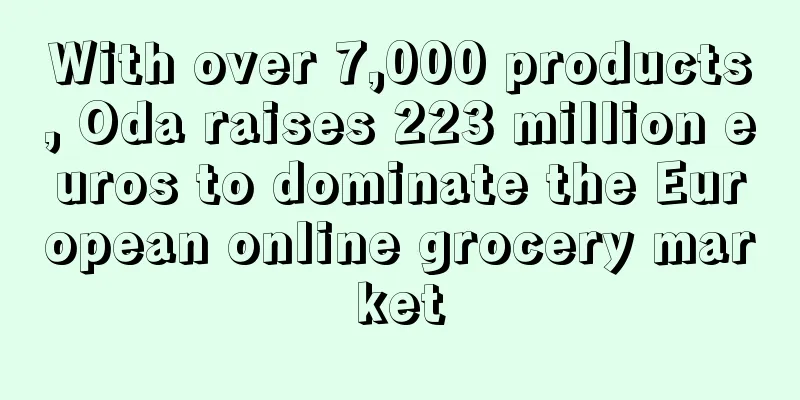Sellers earn 1 billion in one year, a new trend?

|
There is a “big market” in “small toys”!
Toys are not limited to children, but also young people. Nowadays, trendy toys are being accepted by more and more young people, and there is even a trend of expanding to older people.
The trendy toy culture originated in Japan and Hong Kong, China in the late 20th century. It originally referred to toys designed by independent designers and artists. Trendy toys include multiple categories, and blind boxes and figures are two important ones. Blind boxes refer to boxes containing cute doll figures of various styles, but the box does not indicate which one it is, which has both surprise and social attributes. Figures are exquisite models made based on characters from animation, games, etc., usually with fine workmanship, high ornamental and collection value.
Relying on this culture, related companies have made a lot of money. In the Chinese trendy toy market, Popmart, the first-tier blind box industry, is the largest and fastest-growing company. If we turn our attention to overseas, Funko, an early participant in the trendy toy market, cannot be ignored. In the figure collection circle, Funko's products are often regarded as works with certain collection value and representativeness.
This article will analyze the market layout of these two companies and their marketing methods in the US market, providing a reference for more domestic brands going overseas. (Note: If Chinese brands want to successfully go overseas, they cannot do without professional market analysis and accurate brand positioning. The solution is provided at the end of the article)
With revenue exceeding 1 billion yuan, domestic blind box brands are making money overseas
Pop Mart is a representative of Chinese blind box companies and a driver of the blind box trend. Its establishment can be traced back to 2010. Over the past decade, it has witnessed and promoted the development of China's blind box industry. Standing at the forefront of the blind box trend, Pop Mart's performance has soared, and it was successfully listed on the Hong Kong Stock Exchange in December 2020, becoming China's "first blind box stock". The IPs mainly include self-owned IPs: MOLLY, DIMOO, etc., exclusive IPs: PUCKY, the Monsters, etc., and non-exclusive IPs: Mickey Mouse, Hello Kitty, etc.
According to the published financial report, in 2023, its revenue will reach 6.3 billion yuan, a year-on-year increase of 36.5%, and its net profit will be 1.19 billion yuan. For people in the trendy toy circle, this figure is staggering. A company selling blind box toys can actually support billions of revenue!
What is even more shocking is that Pop Mart has not only achieved great success in China, but some of its IPs are also popular overseas. According to the financial report, in 2023, its revenue from Hong Kong, Macao, Taiwan and overseas businesses exceeded the 1 billion yuan mark for the first time, reaching 1.066 billion yuan, a year-on-year increase of 134.9%. And its growth space overseas is not limited to this.
At the previous 2023 semi-annual performance briefing, Pop Mart had expected that its overseas business would grow by no less than 100% in 2024. Judging from the first quarter financial report of 2024 disclosed not long ago, it has indeed been achieved. According to the financial report, Pop Mart's revenue increased by 40% to 45% year-on-year during the reporting period, of which mainland China increased by 20% to 25% year-on-year, and Hong Kong, Macao, Taiwan and overseas increased by 245% to 250% year-on-year.
Wang Ning, Chairman and CEO of Pop Mart, once expressed the desire to "create another Pop Mart overseas." Now it seems that this wish is not difficult to achieve.
Compared with many of its peers, Pop Mart started its overseas expansion earlier, as early as 2018, before it went public. So far, its overseas business has achieved full offline and online channel presence in more than 20 countries and regions.
Among them, many offline brand stores and pop-up stores have been opened in Japan, South Korea, Singapore, the United States, Australia, New Zealand, the United Kingdom and other countries; the business model of robot vending machines has not only successfully landed in various overseas countries, but also shown a trend of rapid expansion.
At the same time, by opening a global official website and entering mainstream e-commerce platforms such as Amazon, AliExpress, Shopee and Lazada, Pop Mart products have been sold to more than 80 countries and regions.
According to statistics, the growth rate of China's blind box overseas market reached 400% in 2022, proving that China's blind boxes are deeply loved by overseas consumers. In this process, Pop Mart will inevitably play an important role in promoting it.
The changes in popularity on Google Trends indirectly prove this point. As can be seen from the figure below, since the second half of 2022, the global search popularity of "Popmart" has gradually increased, and even rose sharply at the beginning of this year.
Whether it is performance or popularity trends, it can be seen that 2022 is the year when Pop Mart began to take off overseas. It is reported that starting from the first half of 2022, Pop Mart's overseas strategy has shifted from To B to DTC mode, directly facing overseas consumers. After cultivating enough cognition and consumers through offline immersive business experience, it will reach more effective users and consumers through online business to complete the cycle.
Pop Mart is experiencing unprecedented popularity in the global market, and its success is due to its accurate market positioning and innovative marketing strategies. Below, I will analyze it in detail from the perspective of its independent website.
Pop Mart's independent website only started operating in 2021. Women account for a high proportion of its user population, reaching 61.11%, and the overall age is concentrated between 25 and 34. From the overall source of website traffic, the largest number of visits currently comes from the United States, followed by the Philippines and Thailand. In March this year, the total number of visits to the site was 1.215 million, and the purchase conversion rate was 0.39%. According to estimates, the sales in March were approximately US$140,000.
At present, its traffic comes from two main sources: natural traffic and paid search, accounting for 60% and 27% respectively. From the proportion of natural traffic, it can be seen that Pop Mart's brand influence overseas has been opened up, and consumers have a deep understanding of the brand. This can also be seen from the fact that natural search keywords are mainly concentrated on brand words and offline stores.
Perhaps this is why paid search terms are mainly concentrated on brand words and regional advertisements. Data shows that "popmart" and "pop mart" account for 97.79% of the main paid keyword traffic.
In addition to natural traffic and paid search, Pop Mart also firmly grasped the traffic from social media. Among all traffic sources, social media ranked third, accounting for 9.39%. Although the proportion of traffic sources in the entire site is not high, it covers almost all mainstream social media, including Facebook, Youtube, Instagram, and Twitter. It is worth noting that, except for Facebook, the traffic difference between other channels is not very large, but the traffic growth rate of TikTok accounts is very fast.
Social media is an important channel to increase consumers' awareness of IP and increase consumers, and has always been an important position for companies going overseas. From the above content, we can see that Pop Mart also has a complete layout on social media. The following is the operation status of some of its accounts:
Facebook: The current operating homepage is POP MART, which was created in January 2019 and has 550,000 followers. Posts are mainly new product releases and product display pictures, and the frequency is daily.
Youtube: Official account POP MART, 25,000 subscribers, 628 videos released. The content of long videos is mainly animation IP, and the other is mainly in the form of product display, the playback volume is not very high, and shorts are mainly real product shots.
Tiktok: Official account: popmart_global, with approximately 970,000 subscribers and 2.7 million likes. It mainly features real product photos and has a large amount of traffic. In addition, there are multiple matrix accounts including popmart_US, popmartseashop, popmart.usshop, popmart.th.shop, popmartunboxing.us, and popmartsg responsible for promotion and live broadcast.
In addition to promoting itself through social media, Pop Mart has also spent heavily on advertising on Google and Facebook, and has formulated different advertising strategies for different channels. For example, in terms of Google advertising, search and shopping ads take into account brand promotion and product exposure while ensuring sales, while Facebook advertising is mainly based on carousels, and the same post is used more times.
In addition to external influences such as social media marketing and advertising, Pop Mart also attaches great importance to in-site marketing. For example, on the US site, marketing methods include first-order discounts and registration rewards, entrances to special holiday release events, new product release reminders, and checkout reminders for gifts over a certain amount.
Revenue doubled in 5 years, American trendy toy giant reaped the benefits
Compared with Pop Mart, the American trendy toy giant Funko has a much longer history. It was founded as early as 1998. The founder at that time, Mike Becker, was particularly fond of a Big Boy piggy bank, but did not want to pay a high price to buy it, so he started to make related peripherals through authorization. With the launch of Big Boy and other nostalgic doll peripherals, Funko was established.
However, Funko was unknown for a long time , and the turning point came after it was sold. Under the leadership of the new helmsman Brian Mariotti, Funko obtained more popular culture product licenses and launched a variety of products including the POP! series of vinyl collectible dolls, which were loved and collected by consumers around the world, including many stars such as Robert Downey Jr. and Chris Evans.
It took only a few years for the POP! series of vinyl collectible dolls to become a star brand in the US collectible doll market from its birth in 2010. It has obtained authorization from more than 150 world-renowned companies including Marvel, DC, Disney, Pixar, Universal Pictures, DreamWorks, Paramount, CNN, NBA, etc., and has more than 5,000 authorized images of movie, animation and sports stars.
After that, Brian Mariotti worked hard for 12 years and finally successfully listed Funko on the Nasdaq Stock Exchange in 2017. After the listing, Funko's performance began to take off. In just 5 years, its revenue doubled. From 2017 to 2021, its revenue increased from US$500 million to US$1 billion.
Since its establishment, Funko has entered its 26th year. During its development, it has obtained nearly a thousand IP licenses (divided into four types: evergreen IP, movie IP, TV program IP and game IP), forming a diversified product line with figures as the main focus, including other IP derivatives.
Derivative products include luggage, clothing, board games, accessories, etc. Its figures are characterized by being faithful to the original characters and exquisitely crafted, with a stable sales share of more than 80% and an average selling price of around $15. Now, almost all movie stars and celebrities want to have their own exclusive Funko figure.
Funko defines its business model as "fan economy", that is, launching derivative products for everything that has fans. One of the key reasons why Funko can be so popular is that it has a wide fan base. Funko cooperates with many well-known IPs such as Marvel, DC, Harry Potter, etc., and launches various limited edition and special edition products, thus attracting a large number of fans who love these pop cultures. On the other hand, Funko's products often have a certain collection value, especially its limited edition and rare products, which greatly attracts collectors' desire to buy.
The core of trend is strong connection with fans. This model can meet the fans' needs for collecting and displaying their favorite IPs, while also enhancing the interaction and loyalty between fans and brands.
Funko's traditional sales channels mainly include specialty stores, department stores and online stores. Domestic retailers in the United States mainly include Amazon, GameStop, Hot Topic, Target and Walmart.
With the changes in consumer shopping habits and the development of channels such as e-commerce, the DTC model has received more and more attention. Like Pop Mart, Funko has gradually begun to pay attention to direct-to-consumer sales in recent years and has achieved good results. For example, in 2021, its direct-to-consumer sales accounted for 11% of total sales, a proportion that was almost zero just a few years ago.
However, the main force of purchases is different from that of Pop Mart. Among Funko's independent station consumers, the ratio of men to women is more balanced, with men accounting for 55.56% and women accounting for 44.44%, with men accounting for only about 11% more than women. The purchasing group is mainly concentrated in young people, with the largest proportion of 25-34 years old (37.23%), followed by 18-24 years old (22.69%).
From the perspective of global traffic distribution, although Funko has opened the European market, the United States still contributes the largest number of visits (accounting for more than 81%). This is not surprising. According to the latest data on the development status of the figure industry, the North American market share is about 30% of the global market, making it an important player in the figure industry. Among them, the United States is the largest figure consumption market in North America, and many figures of well-known characters have achieved extremely high sales in the US market. What's more, the United States is Funko's base camp.
If we only look at the European market, traffic mainly comes from Germany and the UK, two countries with large e-commerce markets. However, both North American and European consumers prefer to shop on mobile devices, and in this regard, Germany accounts for as high as 90.56%.
In March alone , Funko had a total of 6.761 million visits, 2.672 million unique visits, 3.52 pages per visit, a purchase conversion rate of 3.27%, an average visit duration of 09:45, a bounce rate of 46.45%, and estimated sales in March of approximately $1.31 million (2,672,000*3.27%*15$).
Thanks to its local and product advantages, its natural and direct traffic accounts for about 70%, while paid and social media traffic accounts for about 25%, which is a relatively healthy brand channel traffic distribution. Among social media traffic, Facebook, Twitter and YouTube are the main ones, focusing on content operation and brand promotion.
As we all know, social media is an important platform for telling stories and conveying brand values. Here are some of Funko’s operations on social media:
Facebook: Both online and offline store homepages work together. The online store homepage has 1.2 million fans, with daily posts, large and active groups, and a focus on content and community marketing.
Twitter: 1.23 million followers, daily updates, synchronized with Facebook homepage posts, high interaction rate.
Youtube: 648,000 followers, updates 2-3 times a month, mainly featuring celebrities for interviews.
Tiktok: 671,000 followers, 4-5 updates per week, mainly product IP display and celebrity explanations.
In addition to using social media content to shape brand influence, Funko also attaches importance to advertising. The display advertising alliance focuses on affiliate marketing and mainstream social media display advertising. However, different channels have different delivery strategies: Google search ads focus on brand words and brand promotion, shopping ads focus on product sales and category rankings; FB ads are delivered in different regions, mainly using videos to display products and attract orders.
Inside the website, Funko has also used a variety of marketing methods, such as free shipping on orders over $65, points for purchases, discounts on first-time purchases, etc. It also combines holiday customized products to attract repeat purchases, and special discounts through other channels.
The market size has exploded, and more companies are going overseas to seek gold
According to Frost & Sullivan data, the size of the global trendy toy market increased from US$8.7 billion in 2015 to US$25.9 billion in 2021, with an average annual compound growth rate of approximately 19.9%.
If we look specifically at blind boxes and figures, Google Trends shows that blind boxes have maintained growth over the past five years, with greater interest and faster growth in Asia. Although figures have remained stable over the past five years, there has been an explosion during the New Year, with greater interest in Europe and the United States.
In this context, China's trendy toy market is growing simultaneously. According to a research report by a consulting agency, the retail market size of China's trendy toys was about 20.7 billion yuan in 2019, and it is expected that the market size of China's trendy toys will increase to 76.3 billion yuan in 2024. Tianyancha data shows that there are at least 800 companies in China whose names contain "trend toys" or "trend toys" or whose product labels or project brands contain "trend toys".
However, the booming market also means that competition is intensifying, and "going overseas" has become a common choice for many trendy toy companies seeking growth.
However, many manufacturers seem to be in a very contradictory state: they want to tap into the overseas market very much, but they are held back by various concerns. The journey from 0 to 1 and then to successfully creating a hit product may not be smooth sailing for novice players. Many people often have to go through a lot of trial and error before they can understand the underlying logic of product selection, link promotion, advertising and other links... A professional brand incubation and operation team can help sellers skip the novice awkward period and successfully gain a foothold overseas.
E-EN has been deeply engaged in cross-border e-commerce for 14 years, providing market and marketing services to many global Internet giants such as Google, Meta, Microsoft Bing, Alibaba, TikTok, Amazon, etc., and has accumulated rich experience and resources in e-commerce overseas expansion.
Blind Box Figures |
<<: Sales of goods worth 60 billion yuan a year! Shenzhen sales performance soars
>>: Traffic and sales both declined! A large number of brand sellers’ listings had problems
Recommend
A large number of Amazon sellers have seen a sharp drop in inventory capacity, with some sellers exceeding 20,000...
There have been many major events in the cross-bo...
Surprise! A large number of Meiya second-instance accounts were suddenly unblocked
A large number of Amazon sellers received emails ...
With 9.2 million visitors last month, Temu is now Australia's eighth largest online retailer
It is reported that Temu officially launched its ...
In February, the number of visits to e-commerce websites in Brazil reached 1.49 billion, a year-on-year increase of 21%!
Recently, SEO agency Conversion conducted a month...
What is ossila? ossila Review, Features
Ossila was founded in 2009 by organic electronics ...
What is Spark Pay? Spark Pay Review, Features
Spark Pay is Spark's mobile payment product, p...
What is Q Express? Q Express Review, Features
Q Express was originally Souq's last-mile deli...
Revenue of more than 2.1 billion in 9 months! Shenzhen Dashao "kills" the siege in the trillion-level track
The 3C track is now a well-deserved "super r...
Multiple Amazon warehouses are overwhelmed, and a group of sellers are unable to ship goods
Amazon's system seems to be acting up again. ...
eBay updates account bad transaction management policy, seller center policy section is upgraded simultaneously
Today, eBay released a new announcement in its Se...
Big deal! Lechuang Holdings spends nearly 30 million yuan to encourage employees
In recent months, the cross-border e-commerce ind...
With over 580,000 SKUs on sale, Santai Shares suspends its IPO!
Under the influence of the epidemic, the cross-bo...
What is Earthremit? Earthremit Review, Features
<span data-docs-delta="[[20,{"gallery"...
What is HipVan? HipVan Review, Features
HipVan is a Singapore-based e-commerce platform th...
What is the Seychelles Financial Services Authority (FSA)? Seychelles Financial Services Authority (FSA) Review, Features
<span data-docs-delta="[[20,{"gallery"...









